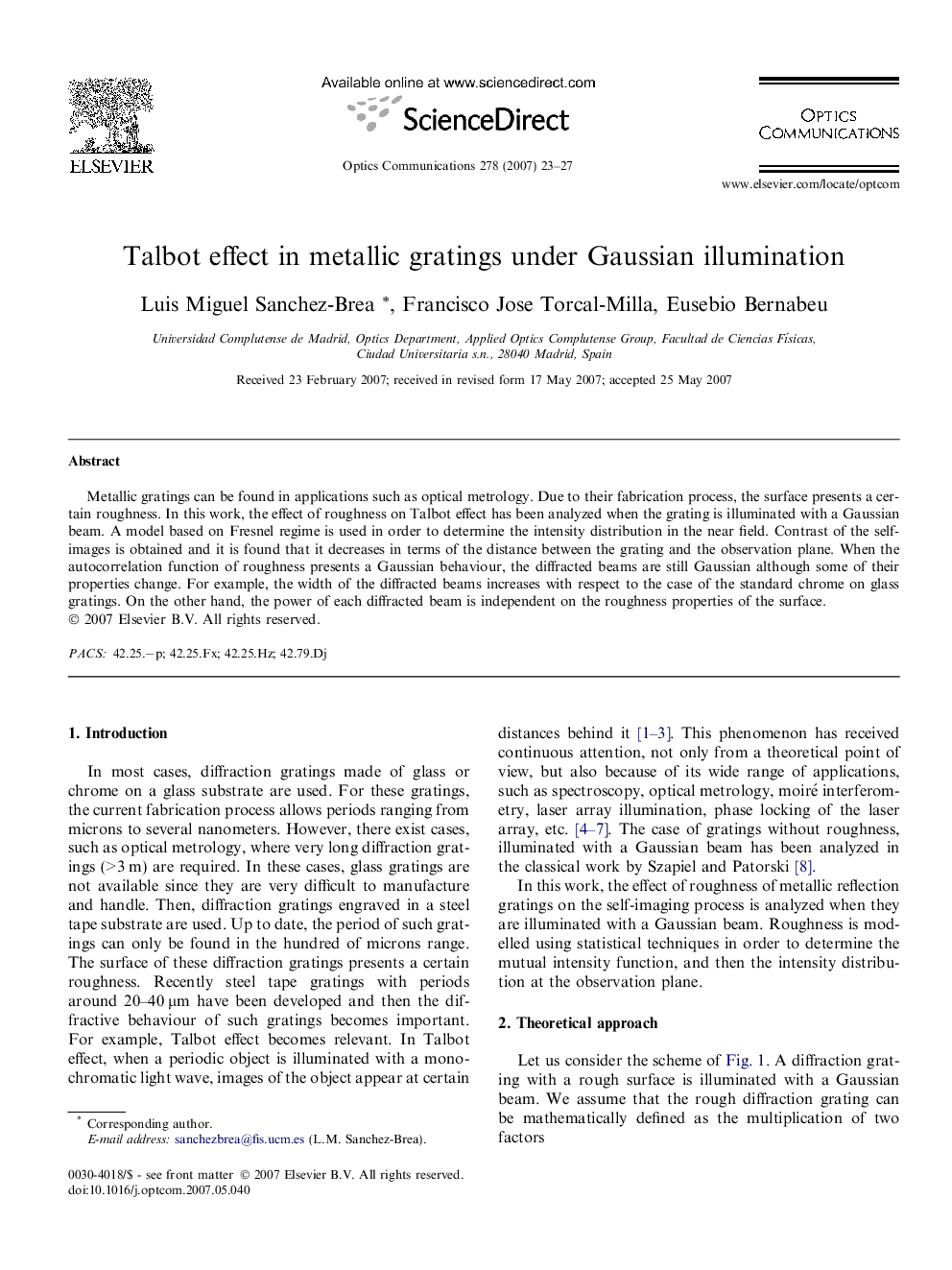| Article ID | Journal | Published Year | Pages | File Type |
|---|---|---|---|---|
| 1541853 | Optics Communications | 2007 | 5 Pages |
Metallic gratings can be found in applications such as optical metrology. Due to their fabrication process, the surface presents a certain roughness. In this work, the effect of roughness on Talbot effect has been analyzed when the grating is illuminated with a Gaussian beam. A model based on Fresnel regime is used in order to determine the intensity distribution in the near field. Contrast of the self-images is obtained and it is found that it decreases in terms of the distance between the grating and the observation plane. When the autocorrelation function of roughness presents a Gaussian behaviour, the diffracted beams are still Gaussian although some of their properties change. For example, the width of the diffracted beams increases with respect to the case of the standard chrome on glass gratings. On the other hand, the power of each diffracted beam is independent on the roughness properties of the surface.
